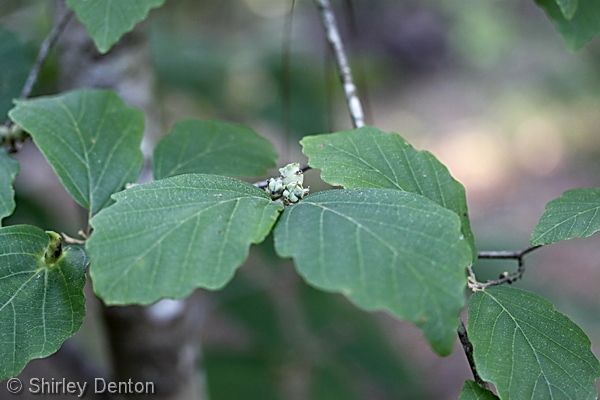FNPS Plant Database
Hamamelis virginiana
Nomenclature
Common Name:
Synonym(s):
Genus species:
Family:
Hamamelidaceae
Plant Specifics
Form:
Size:
Life Span:
Long-lived perennial
Flower Color:
Fruit Color:
Phenology:
Noted For:
Landscaping
Recommended Uses:
Considerations:
Availability:
Propagation:
Light:
Moisture Tolerance:
Always Flooded---------------------------------Extremely Dry
□□□□□□□□□□□□□□□■■■■■■■■■■■■■■■□□□□□□□□□□□□
Usually moist, occasional inundation -to- Not wet but not extremely dry
Salt Water Flooding Tolerance:
Unknown
Salt Spray/Salty Soil Tolerance:
Low/no tolerance of salty wind or direct salt spray
Soil or Other Substrate:
Sand, Loam
Soil pH:
Suitable to Grow In:
8A,8B,9A,9B

USDA zones are based on the average annual extreme minimum winter temperature.
Don't know your zone? Click here to search by zip code.
Ecology
Wildlife:
Pollinated by moths that are active on cooler nights consistent with the season of flower for witch hazel.
The fruit is eaten by bobwhite, white-tailed deer, rabbit and beaver
Native Habitats:
Natural Range in Florida:
Visit the USF Libraries Atlas of Florida Plants
Comments:
Ethnobotany:
General Comments:
Citations:
https://kimmerer.com/winter-sex-witchhazel/
Nelson, Gil. 2003. Florida's Best Landscape Plants. Association of Florida Native Nurseries.
University of Tennessee Extension Service. Desired Ph Range and salt tolerance of common nursery plants. https://extension.tennessee.edu/mtnpi/Documents/handouts/Fertility/Desired-pH-Range-List.pdf accessed 2021.
Wunderlin, R. P., B. F. Hansen, A. R. Franck, and F. B. Essig. 2021. Atlas of Florida Plants ( http://florida.plantatlas.usf.edu /). Institute for Systematic Botany, University of South Florida, Tampa.







